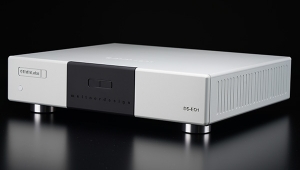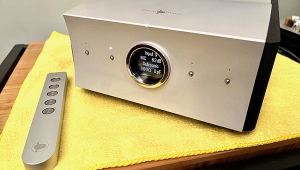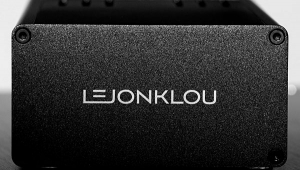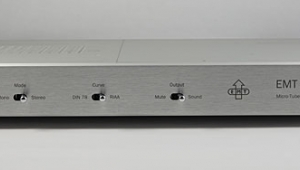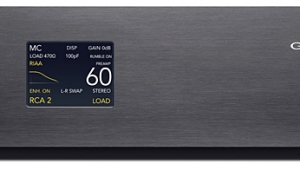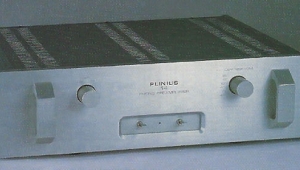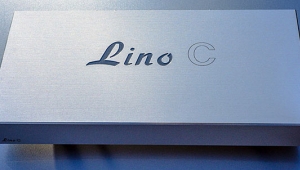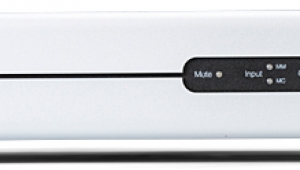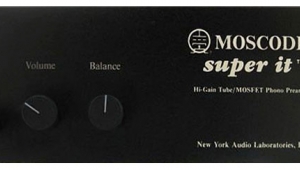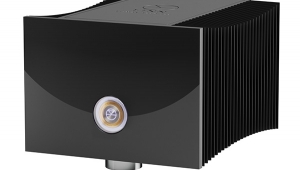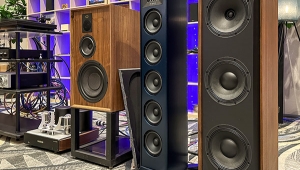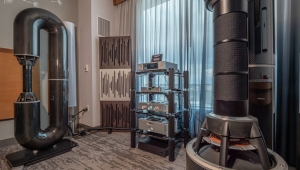| Columns Retired Columns & Blogs |
American Hybrid Technology phono preamplifier
Just as the Trappist Monks of Digital Audio are once again grabbing at the bellpulls to ring the death knell of analog, another fine piece of gear pops up dedicated exclusively to LP playback: the American Hybrid Technology Phono Stage. To one of the Analog Committed, this is good news. That the unit sounds as wonderful as it does is even better news. Anything else? Pull up a pew, Brother.
Footnote 1: Following the shared power-supply module, which provides a preliminary stage of voltage regulation using Linear Technologies LT317 and '337 three-pin ICs, the AHT's construction is dual-mono, with two more pairs of '317/337 regulators used to derive separate bipolar voltage rails for each channel. These regulators are physically close to the ICs they serve to provide maximum regulation. The circuitry itself appears to be based on an ultra–low-noise, ceramic-package LT1028 op-amp from Linear Technologies running on ±17.7V, with two other unidentifiable op-amps per channel presumably performing support and housekeeping duties. The double-sided circuit board appears to be glass-fiber, with a ground plane surrounding the active circuitry.—John Atkinson

Tech Talk
The American Hybrid Technology Phono Stage is a two-box unit; the regulated power supply is attached by an umbilical to the phono stage proper. A few circuit (footnote 1) blurbs: shortest possible signal paths; ultra-high–precision, ultra-high–cost, 0.05% Vishay resistors; Teflon caps (none "crossing" the signal path); DC-coupled; all silver solder; and vdH linear-crystal 300µm silver wire inputs. Substituting internal resistors alters the overall gain from 46 to 67dB, making the AHT particularly appropriate for a number of the low-output MC cartridges fashionable these days. I used a 50 ohm value for my trusty Grasshopper Gold—brisk, light, and adept on its suspension lo, these many hard audiophile months. The 'Hopper is also designer Dan Fanny's reference, mounted on his tweaked-out Goldmund Reference.
In a similar fashion, you can change the input loading resistors for a satisfactory match with your cartridge of choice. In RF-rich New York (I knew we were rich in something), 47k is a little jumpy and noisy, while loading the cartridges at 50 or 100 ohms was much easier to set for, and sounded best. Once the unit has the correct complement of Vishays snuggled down in all the right places, the user must adjust for zero DC offset with the supplied meter and miniature screwdriver. After placing the unit where it will be used, plug the RCA probe into one of the output jacks, and lock and load on DC millivolts. A pair of pots (one per channel) serves to null DC out to zero or thereabouts. After each turn of the DC adjusting screw, replace the top for a moment and let the unit stabilize before checking the reading. Then the other channel, laddie, and you're ready to play.
A Friendly AHT Phono Stage Warning: When changing the input loading resistors or gain resistors, unplug the unit first or Mr. Fanny will appear at your door, tools in hand, to repair the inevitable damage, and probably straighten out the electricity in your home, or possibly your neighborhood.
Sound
I began auditioning the phono stage by connecting it to the line stage of my reference CAT Signature with American Hybrid's own Ultra Resolution cable, which is sheathed in sleek black and filled with copper to the nines. I ran short links of the AHT cable from the Forsell Air Force One Mk.I to the AHT, and 1-meter pairs from there to the CAT's line inputs. Another long pair of this low-capacitance cable carried the signals out to either my faithful stereo Jadis Defy-7 Mk.II, or to a pair of mono'd Defys (footnote 2).
The first thing I noticed on cranking the volume was that the AHT was extremely quiet—much quieter, in fact, than my RF-challenged CAT. I started listening with Ellington Jazz Party in Stereo (Columbia JCS 8127), concentrating, as always, on side two, cuts 3 and 4, "Tymperturbably Blue" and "Hello Little Girl," the latter featuring Jimmy Rushing and Dizzy Gillespie. Cut 3 is terrifically ambient, and the deep, wall-to-wall aural environment should be reproduced with no restriction and a palpable sense of the band performing with joy and gusto right there in front of the listener. On cut 4, Jimmy Rushing does a little low-level finger-snapping during his number that only the best systems in top form can retrieve. Jimmy's voice should also be rendered with a tight center image and a good sense of the original event. Would the AHT phono stage measure up?
At first blush, the soundstage was just as wide as it's possible to expect anything to be, and adequately deep to suggest the original event. Jimmy's voice was well-focused, and his finger-popping was right there in the mix on cut 4, positioned correctly in space somewhat below the mike. Pace and timing seemed to "fall readily to hand," as the car mags say. Images were sharply rendered and layered in space, and the frequency response seemed right, with a tight, fast bass line complementing the quick and adept handling of initial transients. The midrange retained all the important ingredients, and the upper registers were fast, open, and extended, if a bit on the lean side.
"What does he mean, 'on the lean side'?," I can hear you ask yourself. As a result of The Quick Release Teflon Dielectric Cap Syndrome (no smearing) and other design considerations (covered shortly), Dan Fanny's phono stage comes across sounding clean, quiet, accurate, articulate, and lean in the sense that the harmonics are neither overly emphasized nor stripped out. Perhaps it's this scrubbed-clean presentation that causes strings to occasionally sound a bit hard, but even the Immensely Audio Jaded® would never label the unit "hard"-sounding in general. It's a question of balance, after all. Just season to taste by choosing the cable that best floats your boat.
Footnote 1: Following the shared power-supply module, which provides a preliminary stage of voltage regulation using Linear Technologies LT317 and '337 three-pin ICs, the AHT's construction is dual-mono, with two more pairs of '317/337 regulators used to derive separate bipolar voltage rails for each channel. These regulators are physically close to the ICs they serve to provide maximum regulation. The circuitry itself appears to be based on an ultra–low-noise, ceramic-package LT1028 op-amp from Linear Technologies running on ±17.7V, with two other unidentifiable op-amps per channel presumably performing support and housekeeping duties. The double-sided circuit board appears to be glass-fiber, with a ground plane surrounding the active circuitry.—John Atkinson
Footnote 2: Internally modified to act as monoblocks, with one set of input tubes running all 12 6550s. Strapping not recommended.—Jonathan Scull
- Log in or register to post comments
